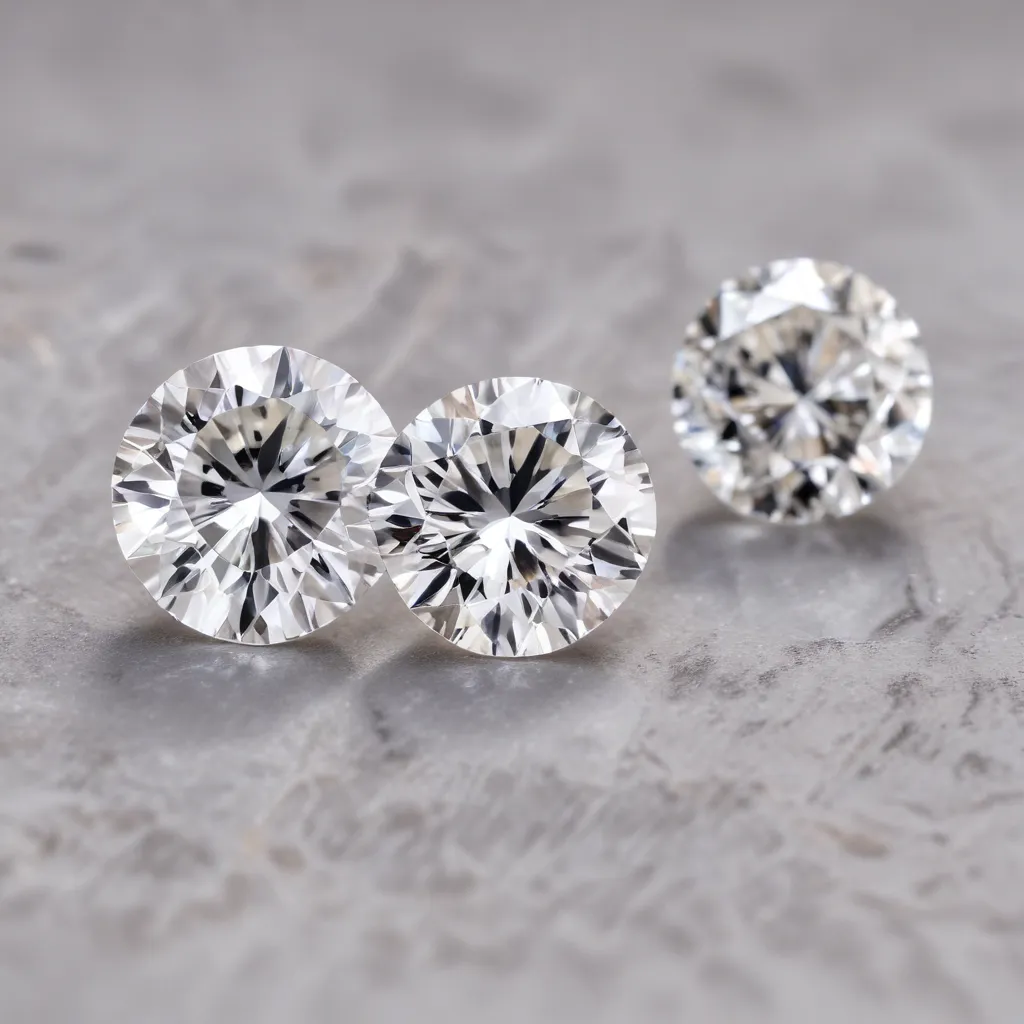
Moissanite and cubic zirconia are two of the most popular diamond alternatives on the market today. Both offer a sparkling, brilliant appearance at a fraction of the cost of natural diamonds. However, there are distinct differences between these two synthetic gemstones that are important to understand when making a purchase.
Optical Properties: The Brilliance Factor
The optical properties of a gemstone are what give it its signature sparkle and fire. When it comes to moissanite vs. cubic zirconia, the differences in refractive index and dispersion are key.
Refractive Index: Moissanite boasts a higher refractive index of 2.65 to 2.69, compared to cubic zirconia’s index of around 2.17. This means that moissanite has a greater ability to bend and refract light, resulting in more intense fire and brilliance.
Dispersion: Moissanite also exhibits higher dispersion, with a value of 0.104 compared to 0.058-0.066 for cubic zirconia. This increased dispersion gives moissanite a more dazzling rainbow-like effect when exposed to light.
The combined impact of moissanite’s superior refractive index and dispersion creates an unparalleled sparkle and brilliance that can even surpass that of a natural diamond. This “disco ball” effect, as it’s sometimes called, is a key draw for many consumers seeking an alternative to the traditional diamond.
Chemical Composition and Structure
Moissanite is a synthetic gemstone composed of silicon carbide (SiC), a material first discovered in a meteorite crater by Nobel Prize-winning scientist Henri Moissan in 1893. Due to the rarity of natural moissanite, the vast majority used in jewelry today is lab-created.
Cubic zirconia, on the other hand, is a synthetic crystal made from zirconium dioxide (ZrO2). It was first developed in the 1970s as a more affordable diamond simulant.
The atomic structures of these two materials differ, contributing to their distinct optical and physical properties. Moissanite’s silicon carbide crystal structure gives it a higher hardness and thermal conductivity compared to cubic zirconia.
Durability and Hardness
Durability is a crucial consideration when choosing a gemstone for everyday wear.
Moissanite scores a 9.25 on the Mohs hardness scale, making it one of the hardest gemstones available. This exceptional hardness allows moissanite to resist scratches and maintain its brilliance over time.
Cubic zirconia, on the other hand, has a hardness of 8 to 8.5 on the Mohs scale. While still relatively durable, it is more susceptible to scratches and surface wear compared to moissanite.
In addition to hardness, moissanite also exhibits superior thermal stability, allowing it to withstand the high temperatures involved in jewelry manufacturing processes without degradation.
Ethical and Environmental Considerations
Both moissanite and cubic zirconia are lab-created gemstones, making them attractive options for those seeking more ethical and sustainable alternatives to mined diamonds.
However, the manufacturing process for moissanite is generally considered more environmentally friendly, as it requires less energy-intensive methods than the techniques used to produce cubic zirconia.
Appearance and Visual Characteristics
When it comes to appearance, moissanite and cubic zirconia have some distinct differences.
Color: Moissanite is typically near-colorless, with a slight yellow or gray hue in some instances. Cubic zirconia, on the other hand, is most commonly found in a completely colorless state.
Clarity: Both moissanite and cubic zirconia are known for their exceptional clarity, often appearing eye-clean or flawless to the naked eye. This high level of clarity contributes to their brilliant appearance.
Cut and Symmetry: The cut and symmetry of a gemstone are crucial for maximizing its optical properties. Moissanite and cubic zirconia can both be expertly cut to enhance their fire and brilliance, though moissanite may require more specialized cutting techniques to achieve the desired “diamond-like” look.
History and Origin
Moissanite’s unique origins can be traced back to a meteorite discovered by Dr. Henri Moissan in 1893. The tiny silicon carbide crystals he found sparked his interest and eventually led to the development of synthetic moissanite for use in jewelry.
Cubic zirconia, on the other hand, is a completely man-made gemstone, first synthesized in a laboratory in 1937. It rose to prominence as a diamond substitute in the 1970s, offering a more affordable alternative to natural diamonds.
Cost and Affordability
One of the primary reasons consumers are drawn to moissanite and cubic zirconia is their cost-effectiveness compared to natural diamonds.
Moissanite is generally more expensive than cubic zirconia, but it is still significantly more affordable than a diamond of comparable size and quality. This makes moissanite an attractive option for those seeking a high-quality diamond alternative.
Cubic zirconia, being the more budget-friendly of the two, appeals to consumers who prioritize affordability over long-term durability and resale value.
Purchasing Considerations
When choosing between moissanite and cubic zirconia, it’s essential to consider factors such as certification, retailer reputation, and your personal preferences.
Reputable vendors and certifications (such as the American Gem Society or the Gemological Institute of America) can help ensure the quality and authenticity of your chosen gemstone.
Ultimately, the decision between moissanite and cubic zirconia comes down to your individual needs, budget, and personal style. Both offer stunning alternatives to natural diamonds, with their own unique benefits and trade-offs to consider.
For those seeking a durable, brilliantly sparkling gemstone that closely resembles a diamond, moissanite may be the ideal choice. However, for those on a tighter budget who still want a beautiful and affordable option, cubic zirconia can be a viable alternative.
Regardless of your choice, Shelby Gem Factory is here to provide you with expert guidance and a wide selection of high-quality moissanite and cubic zirconia jewelry to suit your needs. Visit our website at www.shelbygemfactory.com to explore our collection and discover the perfect gemstone for your next special purchase.

